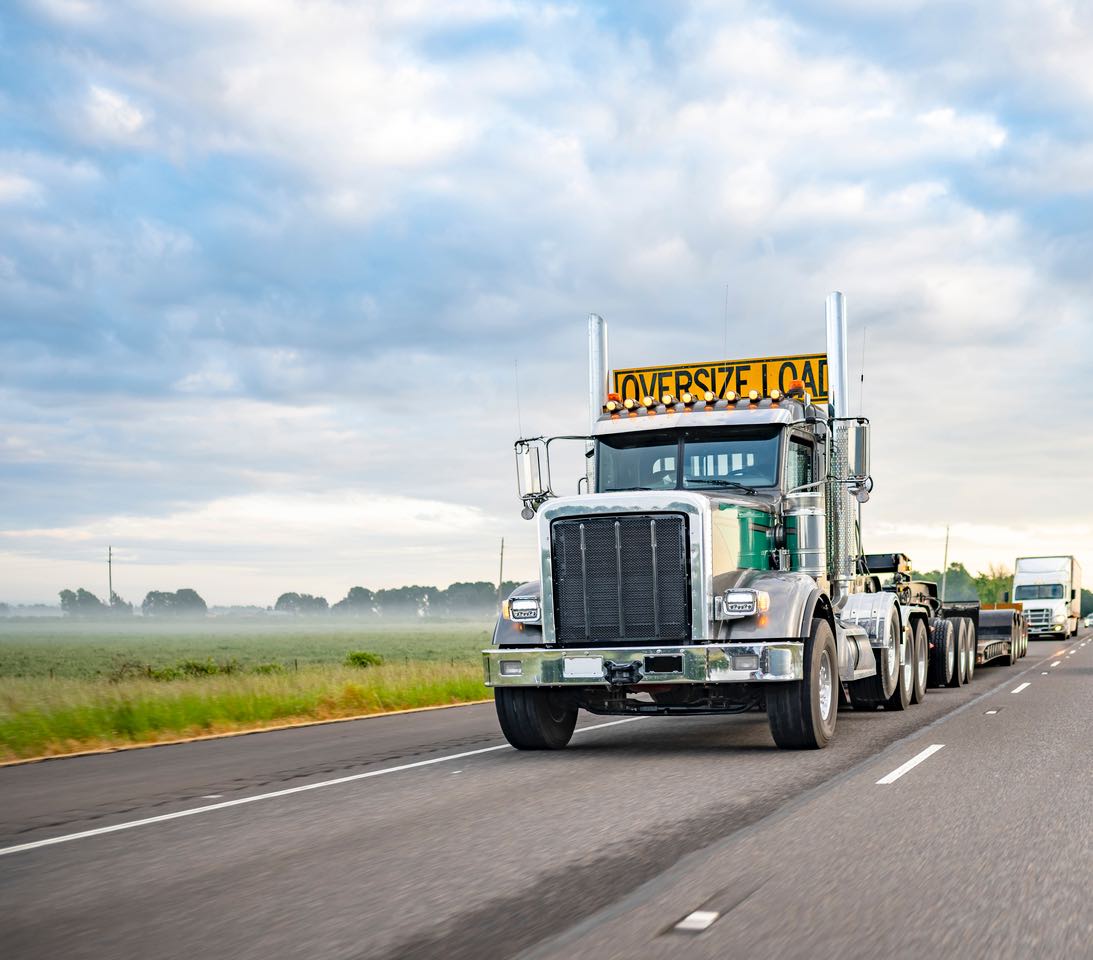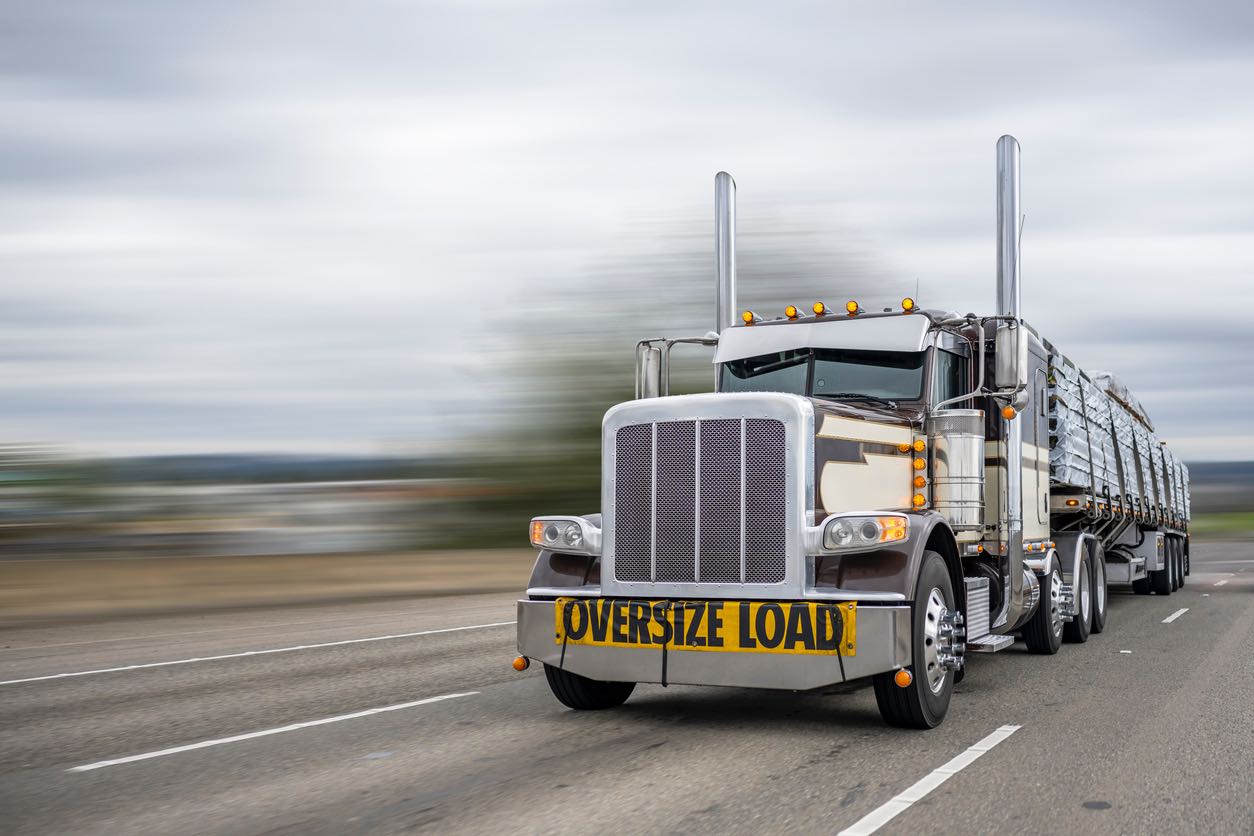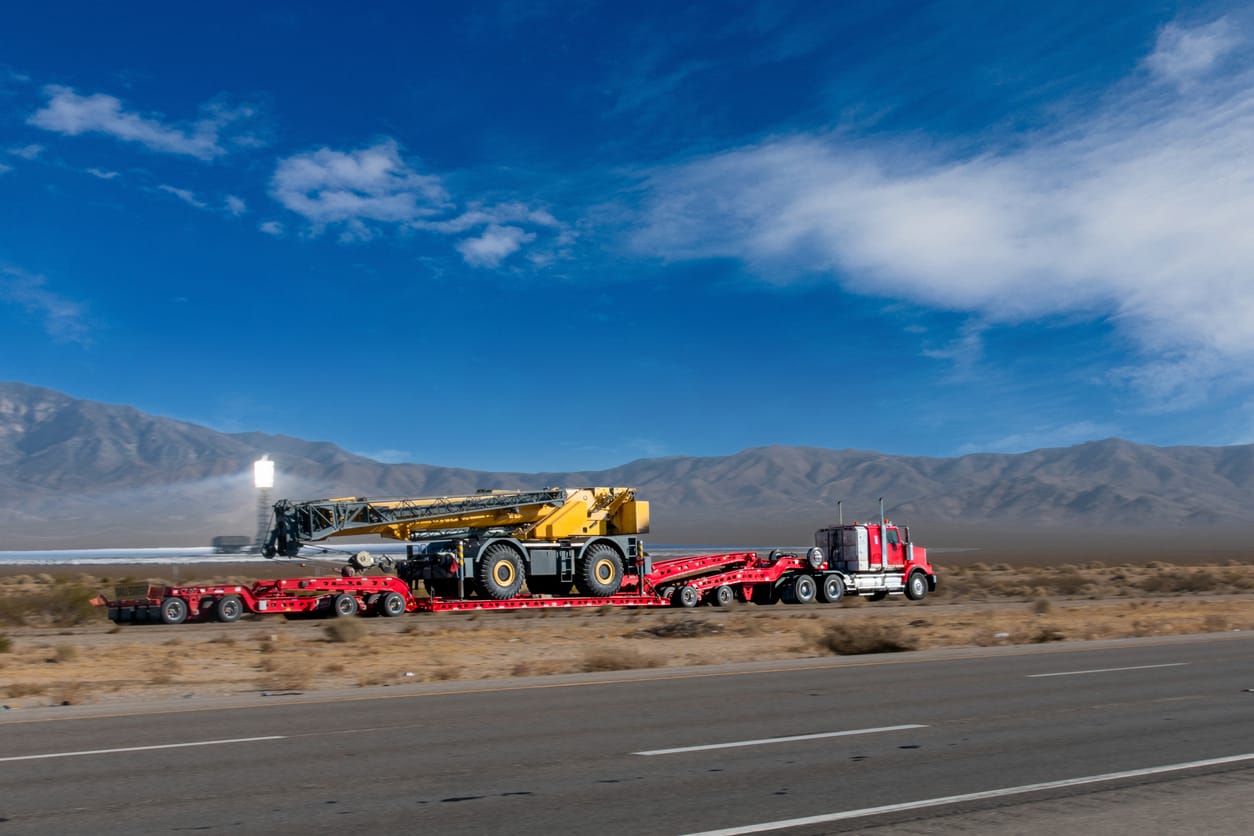Each piece of equipment has an indisputable significance in the huge world of construction, where towering cranes and strong bulldozers rule supremely. The hidden heroes of our contemporary infrastructure are these mechanical giants, with their roaring engines and vast powers. One project at a time, they move, lift, and excavate, reshaping the environment around us. Nevertheless, despite their strength and skill, they nevertheless face a logistical difficulty that frequently goes unnoticed: the complex transit system. It takes skill, knowledge, and a thorough grasp of the technology involved to move these titans from one location to another.
Transporting construction machinery is like to choreographing a lavish dance. From the first planning to the last action, everything must be done precisely. It is crucial to ensure the safe and prompt transportation of equipment in a sector where delays can cause major financial repercussions. But how does one handle this task’s complexity? What are the recommended procedures to adhere to, and how might technology support this effort? In this manual, we dig into the subject of moving construction equipment, providing knowledge, advice, and a thorough checklist to guarantee a smooth transition. Join us as we explore the complexities of this crucial area of the construction sector.

The silent giants of the contemporary day, construction machinery toils ceaselessly in the background to sculpt our metropolitan environments. These tools, which can range from enormous cranes to earth-moving bulldozers, form the foundation of every significant construction undertaking. Their responsibilities are varied and include everything from moving enormous quantities of material between sites to grading massive swaths of ground and constructing deep foundations. Every piece of machinery has been painstakingly created to do a single purpose, assuring maximum effectiveness and accuracy in every action. They have completely transformed the building sector, allowing us to develop structures that are taller, deeper, and more expansive than before.
Despite their power and engineering prowess, these machines are not without flaws. Their incapacity to move independently from one spot to another is one of these restrictions. Although it might appear unimportant, moving them becomes logistically difficult due to their enormous size and complex components. It involves more than merely hauling or driving them to a new site. It’s about preserving their functionality, protecting their safety, and reducing downtime. After all, time is of the importance in the fast-paced world of construction, and every minute a machine is idle because of relocation problems might result in a delay for the entire project. This is why it’s so important to comprehend the specifics of hauling construction machinery.
The construction sector, which was formerly seen to be hesitant to adopt new technology, is now at the forefront of this development. The building industry is changing dramatically as we continue to incorporate digital products into our daily lives, from smartphones to smart houses. Businesses are utilizing technology to change procedures, boost productivity, and better project outcomes in general. Leading the charge and providing ground-breaking technologies that are changing the construction industry are businesses like Procore and Autodesk. These innovators are improving cooperation, safety, and sustainability in addition to optimizing project administration.
Smart technology use in the construction industry goes beyond project management. Real-time tracking of equipment is now possible thanks to advanced software solutions, guaranteeing that it is always in the correct place at the appropriate time and is used effectively. Automation means decreasing mistakes, lowering manual input, and accelerating operations. Additionally, thorough digital documentation makes sure that every detail is recorded and immediately accessible, from equipment maintenance records to project timetables. The goal of this digital transformation is to maximize resource allocation, foresee problems before they occur, and eventually execute projects on time and within budget. It is not only about convenience. The integration of technology and construction promises to lead to smarter, safer, and more sustainable constructions in the future.

The first and most important stage in the machinery relocation process is to thoroughly read the owner’s handbook. This wealth of knowledge, which is frequently disregarded, holds the secret to comprehending the specifics of your equipment. The document offers a road map to guarantee the safety and integrity of your equipment throughout travel, from particular handling recommendations to potential weaknesses. Ignoring this stage might result in expensive errors, possible damage, or even put the safety of people engaged in the shipping process at danger.
A practical examination of the equipment is necessary in addition to the instructions. Every crevice, lever, and gauge should be carefully examined for wear, potential flaws, or components that could be damaged during the transport. To safeguard them from the rigors of the travel, delicate components, especially those that protrude or are externally exposed, should be securely wrapped, ideally in bubble wrap or other protective materials. Keep in mind that even the tiniest error might result in serious consequences. Careful planning beforehand not only protects your investment but also guarantees a simple and trouble-free move experience.
The importance of putting together the best crew to transport your construction equipment simply cannot be overstated. The experience and efficiency of the team you select will make or break your project schedule in a field where every second matters. A knowledgeable company that transports heavy equipment, like Ship A Car, Inc., brings a plethora of information and resources to the table. Their network of skilled specialists understand the complexities of operating big equipment and are more than just skilled drivers. They methodically supervise every detail, from the very beginning of planning to the very end of unloading, making sure that your equipment arrives at its destination in perfect shape.
The truth is that your initial pick might not always be accessible. Although it may be tempting to choose another heavy haul transport company right away, you must be cautious. Making the wrong decision can cause delays, higher expenses, and even damage to your expensive equipment. Customer feedback and detailed guidelines both play a role in this. They can give you information on the dependability and effectiveness of different transportation providers. But keep in mind that skimping on the transport provider might result in skimping on the work itself, and that’s a risk you don’t want to take. Therefore, if making a choice, always give quality and reputation precedence above price.

Transporting construction equipment safely involves more than simply avoiding mishaps along the way; it also entails preserving the machinery’s life and guaranteeing its peak performance. From the tiniest excavator to the biggest crane, every piece of machinery has a certain set of weaknesses. Even the smallest error may lead to problems, which not only endanger the machinery but also the operators and other staff who work with it. Unexpected complications are less likely to occur when a machine is well-maintained and less likely to have problems when being transported.
On the other hand, maintenance plays a crucial role in equipment lifetime. Every part of the machinery is kept in top working order by routine inspections and tune-ups. This proactive strategy increases the equipment’s efficiency and longevity while also lowering the danger of malfunctions. It’s essential to do a complete evaluation of the equipment’s condition prior to any relocation. This involves looking for worn-out components, making sure all fluids are at the proper levels, and taking care of any wear-and-tear indications. When you put safety and maintenance first, you’re not only planning for a smooth transfer but also making an investment in the durability and dependability of your construction equipment.
The pre-loading procedure, which occurs before the actual relocation, is a crucial step that frequently decides the outcome of the entire operation. The main goal of this step is to make sure the machinery is ready for transfer. It combines thorough examination, preventative actions, and calculated planning. One may greatly lower the transportation risks by following a thorough pre-loading checklist, guaranteeing that the equipment arrives at its destination in the same condition it was in before the voyage started.
- Cleaning Is Crucial: Beyond its appearance, a clean machine is essential. Potential problems or defects that might need to be repaired before delivery can be hidden by dirt and grime. Additionally, a spotless surface makes it simpler to locate and use crucial handholds and tie-down points, assuring tight fastening when moving. Regular cleaning extends the equipment’s lifespan as well, so this action is advantageous in more ways than one.
- Taking Care of Your Batteries: Any machine’s battery, which provides the essential electricity for functioning, is its brain. However, there is a chance that the battery will discharge during shipment, particularly if the apparatus is unintentionally turned on. To make sure the equipment gets to its location prepared for use, unplug the battery before shipping. This little action will help you avoid spending hours upon hours upon arrival recharging or even replacing batteries.
- Secure Every Piece: The equipment is subjected to a variety of stresses during transit, and the voyage can be lengthy and occasionally difficult. To avoid them swinging open or being damaged, it is crucial to make sure that all doors, compartments, and moving elements are properly fastened. Zip ties provide a simple and efficient alternative when conventional locks fail or are insufficiently secure. These connections can secure the components, maintaining their integrity during the travel.

The phrase “wide load” frequently conjures up pictures of enormous machinery traveling down highways with warning signs in tow, escorted by specialist vehicles. Such designations are more than just labels; they also provide a number of practical and legal difficulties. When a piece of machinery is labeled as a broad load, it signifies that the width requirements established by the transportation authority are exceeded. Travel time limitations, mandated routes, and the requirement for extra permissions may result from this. Wide cargoes frequently need escort cars, which can increase expenses. The timeframes, costs, and general effectiveness of projects will all be affected by this categorization.
The good news is that many of these difficulties may be minimized with forethought and strategic planning. Disassembling bigger equipment into smaller parts to fit inside normal shipment dimensions is one practical method. For instance, removing an excavator’s arm or a loader’s bucket might significantly alter the breadth of the machinery. Another strategy is to send accessories separately, which not only makes the main equipment smaller but also gives you more choices for shipping. Weighing the advantages and disadvantages of such tactics is crucial. Even though disassembly and reassembly may require more effort, the savings from eliminating broad load designations and the related costs may more than make up for them. In the business of transporting construction equipment, being proactive may result in significant cost savings and operations that are more efficient.
Final rehearsals are essential in the complex ballet of moving construction equipment. Every little detail, no matter how little, becomes crucial as the moving day draws near and might make the difference between the operation’s success and failure. Checking twice isn’t only a standard procedure; it’s also the last line of protection against unanticipated difficulties. This is the time to make sure that all of your careful planning and preparation go off without a hitch. By going through each arrangement again, you’re not only protecting the tools but also assuring the efficiency and safety of the entire crew.
Checking off items on a checklist is not the only purpose of double-checking. It involves promoting an accountable and responsible culture. This phase requires the participation of every team member, from the equipment operator to the logistics coordinator. You may make sure that everyone is on time and cooperating by verifying timetables. You’re encouraging efficiency and minimizing the likelihood of last-minute misunderstanding by making sure everyone is aware of their tasks. Additionally, by checking the destination information, you may be certain that the equipment will arrive at its destination quickly and securely. In essence, checking twice is the last assurance that a transfer will go smoothly and successfully.

The relocation day, sometimes known as “Game Day” in the logistics industry, is the result of months of careful planning and preparation. Every little detail, no matter how minor, is important on this day. It’s crucial to have a clear head and a laser-focused strategy when the sun rises. All team members should be communicating well, including the transport coordinators and equipment operators. Open lines of communication will help to ensure that any last-minute adjustments or difficulties are quickly resolved.
It is essential to properly record the condition of the equipment while it is being ready for loading. A meaningful record may be created by taking in-depth pictures from several perspectives, protecting against future disagreements or misunderstandings. The attention turns to the final destination once the equipment is safely loaded and on the road. A thorough check is essential when you arrive. Any errors or damage should be reported and repaired before the transporter leaves. This proactive approach not only assures the equipment’s safety and integrity, but it also promotes openness and trust between everyone involved.
The world of building is large and complicated, and every piece of machinery is essential to determining how our constructed environment will look. Despite being strong and durable, these devices pose particular moving difficulties. Moving from point A to point B is only one aspect of the transportation operation. It’s a difficult dance that requires careful planning, knowledge of the specifics of each machine, and attention to detail in each move. The stakes are enormous since every error might result in expensive damages, delays, or safety risks.
The importance of technology and skill becomes clear in this constantly changing environment. Modern innovations provide instruments that can simplify the procedure, from precise pre-loading checklists to real-time tracking. Technology by itself, though, is not the solution. Success is ensured by the collaboration of a skilled team, thorough preparation, and the appropriate equipment. When all of these factors work together, the difficult chore of moving construction equipment becomes a smooth operation, ensuring safety, effectiveness, and affordability. The success of the construction industry will continue to depend on its ability to master the art of equipment transportation as it expands and changes.

The Benefit of Ship A Car, Inc. in Your Corner: Leading provider of big and heavy equipment shipping is Ship A Car, Inc. They provide specialist heavy haul services across the country and have a reputation that has been established over years of service. In addition to moving automobiles, they are also skilled in moving other kinds of heavy machinery, including articulated trucks, tractors, forklifts, backhoes, and more. They go above and above to ensure that each piece of equipment is handled with the highest expertise and care. You work with a staff that is knowledgeable about the complexities of heavy haul shipping when you entrust SAC with the transportation of your heavy machinery.
The Ideal Option for Companies Utilizing Heavy Equipment & Machinery: The selection of the ideal transport partner is essential for businesses that rely significantly on machinery and equipment. For a number of reasons, Ship A Car, Inc. stands out as the top shipping business for heavy haul machinery and equipment. To start with, their wealth of knowledge assures that your equipment is in good hands. They are aware of the particular difficulties presented by moving large pieces of machinery and are equipped to deal with such difficulties. Additionally, because of their dedication to safety, they take all reasonable measures to make sure that your equipment reaches its destination undamaged. Their top-notch customer service guarantees that you are kept informed at every stage of the shipping process and that any issues you might have are immediately resolved. In conclusion, there are many advantages to choosing Ship A Car, Inc., from their knowledge and dedication to safety to their outstanding customer service.
With Ship A Car, Inc., Improve Your Transport Experience: Look no farther than Ship A Car if you’re looking for a reputable and knowledgeable heavy equipment shipping service. Your demands for transportation can be met by their staff of knowledgeable transport coordinators and vast network of vetted carriers. They have the means and knowledge to guarantee a simple and hassle-free transport experience, whether you have a single piece of equipment or a whole fleet. Don’t entrust just any broker and carrier with your expensive equipment. Pick a partner who has a track record of success and a dedication to quality. Contact Ship A Car, Inc. right now to talk with a knowledgeable transport coordinator by filling out their online contact form or giving them a call at (866) 452-3657.
How can I ensure the safety of my construction equipment during transport? Proper preparation, including consulting the owner’s manual, wrapping delicate parts, and choosing an experienced transport company, can ensure the safety of your equipment.
What are the benefits of using smart technologies in equipment transport? Smart technologies offer real-time tracking, streamlined management, and comprehensive documentation, making the transportation process more efficient and cost-effective.




